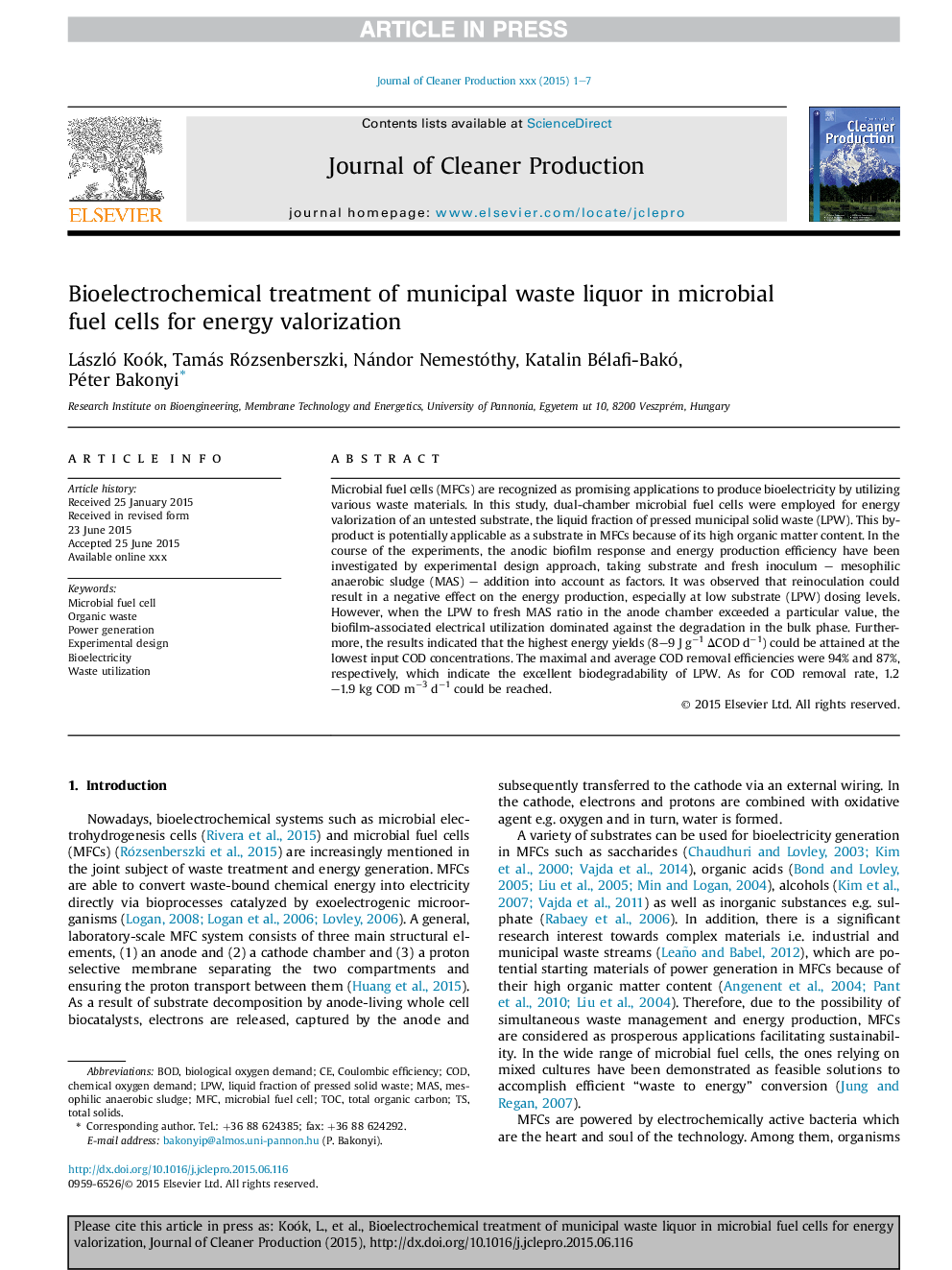| Article ID | Journal | Published Year | Pages | File Type |
|---|---|---|---|---|
| 10687982 | Journal of Cleaner Production | 2016 | 7 Pages |
Abstract
Microbial fuel cells (MFCs) are recognized as promising applications to produce bioelectricity by utilizing various waste materials. In this study, dual-chamber microbial fuel cells were employed for energy valorization of an untested substrate, the liquid fraction of pressed municipal solid waste (LPW). This by-product is potentially applicable as a substrate in MFCs because of its high organic matter content. In the course of the experiments, the anodic biofilm response and energy production efficiency have been investigated by experimental design approach, taking substrate and fresh inoculum - mesophilic anaerobic sludge (MAS) - addition into account as factors. It was observed that reinoculation could result in a negative effect on the energy production, especially at low substrate (LPW) dosing levels. However, when the LPW to fresh MAS ratio in the anode chamber exceeded a particular value, the biofilm-associated electrical utilization dominated against the degradation in the bulk phase. Furthermore, the results indicated that the highest energy yields (8-9 J gâ1 ÎCOD dâ1) could be attained at the lowest input COD concentrations. The maximal and average COD removal efficiencies were 94% and 87%, respectively, which indicate the excellent biodegradability of LPW. As for COD removal rate, 1.2-1.9 kg COD mâ3 dâ1 could be reached.
Keywords
Related Topics
Physical Sciences and Engineering
Energy
Renewable Energy, Sustainability and the Environment
Authors
László Koók, Tamás Rózsenberszki, Nándor Nemestóthy, Katalin Bélafi-Bakó, Péter Bakonyi,
